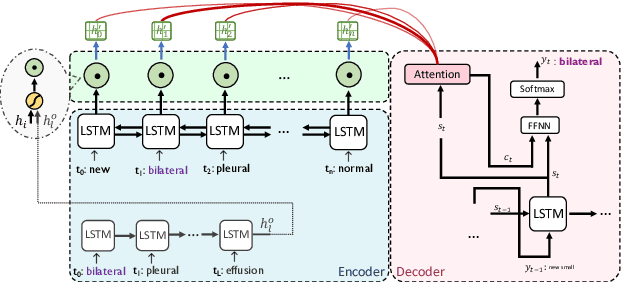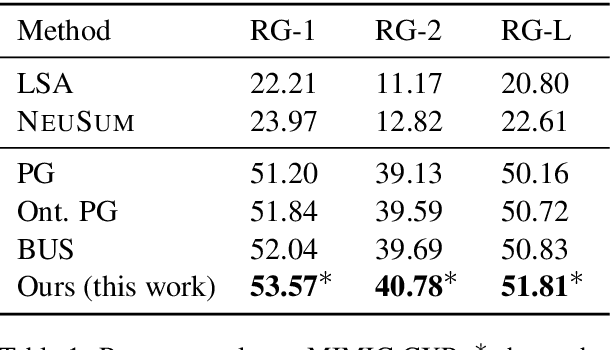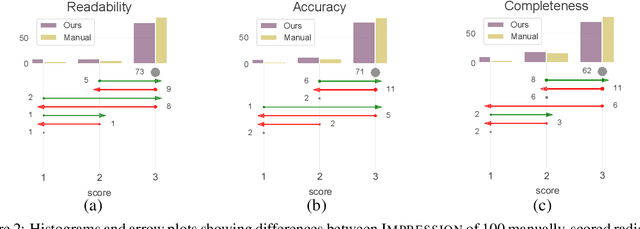Attend to Medical Ontologies: Content Selection for Clinical Abstractive Summarization
Paper and Code
May 01, 2020



Sequence-to-sequence (seq2seq) network is a well-established model for text summarization task. It can learn to produce readable content; however, it falls short in effectively identifying key regions of the source. In this paper, we approach the content selection problem for clinical abstractive summarization by augmenting salient ontological terms into the summarizer. Our experiments on two publicly available clinical data sets (107,372 reports of MIMIC-CXR, and 3,366 reports of OpenI) show that our model statistically significantly boosts state-of-the-art results in terms of Rouge metrics (with improvements: 2.9% RG-1, 2.5% RG-2, 1.9% RG-L), in the healthcare domain where any range of improvement impacts patients' welfare.
* Accepted to ACL 2020
 Add to Chrome
Add to Chrome Add to Firefox
Add to Firefox Add to Edge
Add to Edge